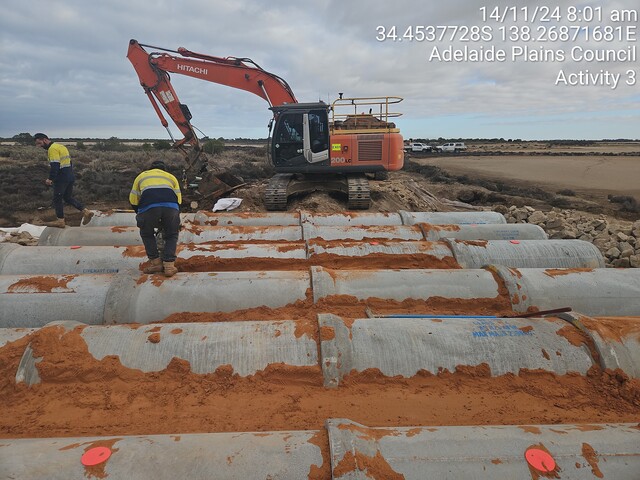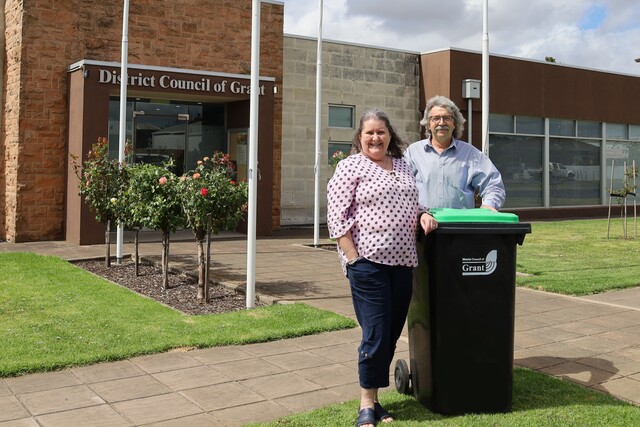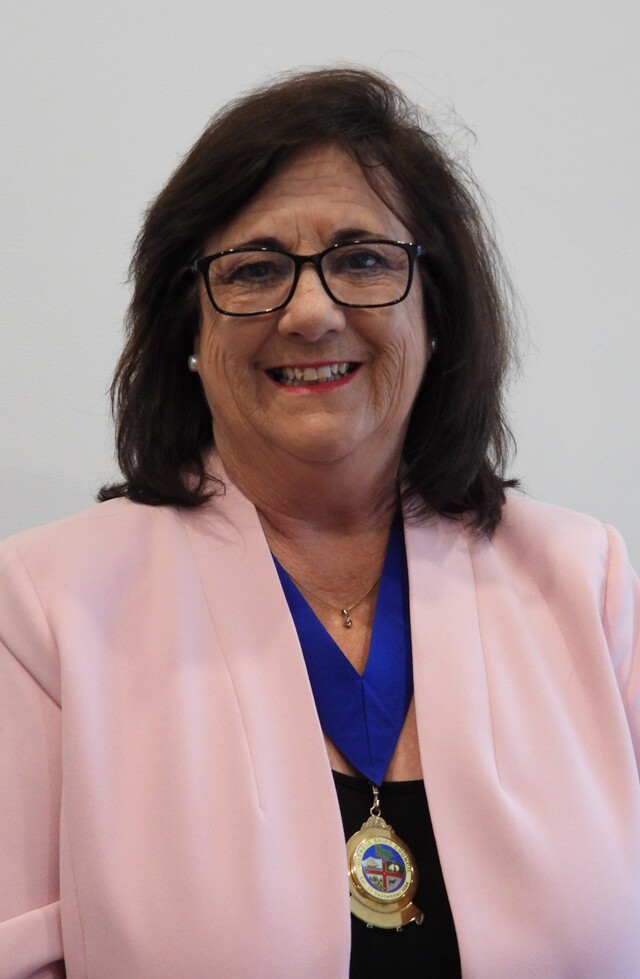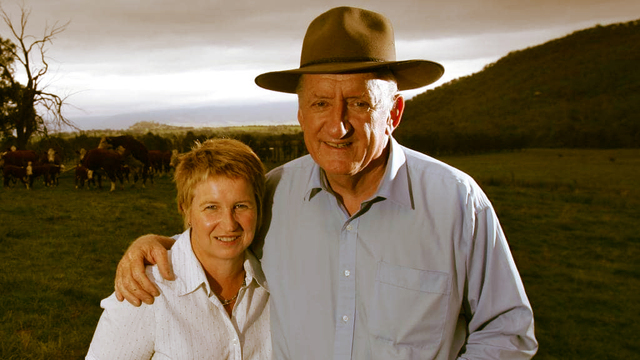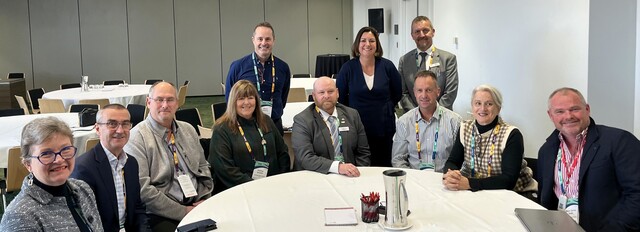The determination of the community of Cummins to turn around its fortunes was acknowledged in early November when it won the national prize of the Can Do Community Awards. Michelle Mahoney and Wendy Holman accepted the Award from Deputy Prime Minister, the Hon John Anderson, on behalf of the project team and volunteers, at the Awards event, which was held at the National General Assembly for Local Government in Alice Springs.
The Cummins on Track Project, which also gained the South Australian state award, is an outstanding example of what a community with true ‘can do’ spirit can achieve.By celebrating Cummins’ historical past, railway orientated projects and businesses have been developed, including the Railway Cafe, Railway Triangle Park and Cummins Community Caravan Park Carriages.The major event produced by the committee is the Cummins IGA Kalamazoo, now in its sixth year. Kalamazoos are hand operated railcarts used by rail workers to travel up and down the railway line.
Since the Cummins on Track Project began, the Cummins Milling Company has expanded to export abalone feed throughout Australia and to New Zealand, and the community bank recently announced profits in its second year of operation.Cummins Area School can boast more students and zero unemployment for school leavers for three years running and the medical centre has expanded. A specialist furniture and wood restoration business and a commercial cut flower shop also opened, resulting in no empty business premises in town.
For further information contact Michelle Mahoney, telephone (08) 8676 2106.
State winners
NSW – Lismore Lantern Workshop, Light n Up
The Lismore Lantern Workshop, Light n Up, is a community arts workspace which produces community events and projects around the region. A project of the Lismore Arts Council, the workshop was initiated in 1994. Now a full time operation, Light n Up has provided an opportunity for the community to participate in highly accessible cultural activities. The major event produced by Light n Up is the annual Lismore Lantern Parade. Established to ‘bring light to the heart of the city’, the parade involves lanterns, face masks, giant puppets, a marching band, shadow theatre, music, circus skills and the Samba. All these elements are developed in workshops leading up to the event.
The Lismore Lantern Parade has become a popular tourist attraction and economy booster. As word of the parade spreads, an increasing crowd fills the CBD for the one evening in June. This year there were 700 participants and 10,000 spectators. Jobs are generated as a consequence of events and casual employment is secured due to increased business. This year the Lantern Parade employed 20 people and within the business community, 25 people gained casual employment as a direct result of the anticipated business generated by the event.
For further information contact Jyllie Jackson, telephone (02) 6622 6333.
Qld – Noosa Suicide Bereavement Program
Several years ago, a suicide in the Sunshine Coast hinterland triggered the deaths of several other people in the same family – a tragic situation that is all too common in many Australian communities. In what is believed to be the first initiative of its kind in Australia, the Noosa Suicide Bereavement Project is leading the way in addressing the needs of those bereaved through suicide by providing a coordinated community response, which includes crisis intervention and long term recovery strategies.
Suicide can leave the people left behind with health, social and personal problems, as well as feeling incredibly isolated in their grief. To help reduce these adverse affects the project uses existing community supports to provide early intervention and ongoing assistance, and links bereaved people back to their community. The project now operates with a wide range of existing networks and peak regional bodies as well as other agencies such as police, ambulance, courts, religious bodies and health services.
For further information contact Jill Fisher, telephone (07) 5442 4277.
Vic – RMIT Intercultural Community Exchange (RICE) Program in the Southern Grampians Community
This innovative program began in 1993 when the bottom fell out of the wool market. The small farming communities of Woodhouse and Nareeb in the Southern Grampians area decided to challenge the recession. They began a series of exchanges with international textile students, to give them a first hand experience with the Australian wool industry. The community loved playing host so much the program was expanded in 1994 to include international students studying at the RMIT University in Melbourne. The RMIT International Community Exchange (RICE) Program has become one of the Southern Grampians, proudest achievements, with more than 150 families playing host to students over the years.
With the expansion of the RICE Program, a learning community is developing which has brought substantial social benefits to the broader community and university by helping to bridge the rural – urban divide. This productive program has resulted in the physical establishment of RMIT Hamilton in 2000, which encompasses the Centre for Regional Rural Development. The site also includes a flexible learning centre offering RMIT’s Bachelor of Nursing, as well as programs focusing on community partnerships.
For further information contact Kaye Scholfield, telephone (03) 5572 0500.
NT – Mt Theo Program
The Mt Theo Yuendumu Substance Misuse Aboriginal Corporation was developed in 1993 as a local solution to the crisis levels of petrol sniffing, which was dominating youth culture in Yuendumu. At community meetings, the idea of sending petrol sniffers to an outstation was suggested by Aboriginal people and agreed by all. The program at Mt Theo Outstation involves removing young people, with the support of their families, from an environment where they sniff to a place where Mt Theo’s traditional owners, the Warlpiri Elders, can care for them.
At the outstation young people are given a chance to learn about Aboriginal heritage and culture. They are also involved in outstation activities, hunting for bush tucker, day trips from the outstation and occasional visits from educational instructors. The program’s second component provides a vibrant alternative to the petrol sniffing scene. Every night of the week, the Yuendumu Youth Centre offers kids activities in the form of a pool table, video games, discos and roller-skating. Petrol sniffing in Yuendumu is virtually non existent today.
For further information contact Andrew Stojanovski, telephone (08) 8956 4188.
Tas – Enormity Inc.
Lack of suitable and affordable entertainment for young people in Ulverstone and surrounding areas was the catalyst that sparked the 1996 formation of a local organisation called Enormity Inc. – a group run by young people for young people. Events organised by Enormity have included regular film nights, social nights and Rock the Coast, a national Youth Week concert this year featuring headline bands and attended by a crowd of about 2000.
Enormity’s biggest achievement has been the Commonwealth Bank National Coat Day, an appeal launched in 1998. Coat Day came about when members of Enormity had a personal experience of homelessness and it was realised that many homeless people lived in Tasmania and would need coats to get them through the winter. The committee contacted school student councils and asked them to conduct an appeal in their local area. Statewide more than 800 coats were collected and sent to charity organisations.
Spurred by the success of the Coat Day in their area, Enormity members went about attracting national sponsorship and partnerships and asked student organisations around Australia to duplicate the appeal. This national appeal is now in its third year and during that time has received and distributed 25,000 coats to homeless Australians.
For further information contact Steve Martin, telephone (03) 6424 7178.
WA – Wundowie Youth Advisory Council
The small, isolated wheatbelt town of Wundowie, 90 kilometres north east of Perth, established a Youth Advisory Council (YAC) in March 2000 after identifying a need for improved activities and facilities for local young people. The YAC members agreed from the start that their mission statement would be ‘bring the community back together as one’. Their many achievements to date have been beneficial to their peers as well as everyone else in the community. One of the first projects of the Council was to build a straw-bale bus shelter. YAC members have gone on to develop several local urban arts projects, organise three major concerts, introduce TAFE short courses and provide many personal development opportunities and leisure activities.
YAC members have developed a business plan, including a five year development project for a community park. So far they have designed and constructed two BMX tracks, a shelter, walkways and landscaping. Further development will include a skate park, lighting, public toilets and a rotunda. A youth centre was opened in November and volunteer supervisors, including YAC members, have been trained by Volunteering Australia and the local TAFE College.
For further information contact Megan Muir, telephone (08) 9573 6525 or Liz Hughes, telephone (08) 9574 2020.
The Can Do Community Awards program recognise communities that have demonstrated the Australian ‘can do’ spirit and come up with creative ways to solve their local issues. Award prizes included $4000 for each of the state and territory winners and an additional $4000 for the national winner. The award winners will also have the opportunity to showcase their initiatives during 2003 through the National Office of Local Government Best Practice Seminars and through the Can Do Community web site at www.facs.gov.au/cando.


